How to Use Ecommerce Product Reviews to Boost Search Engine Rank
“I had a two-wolf shirt for a while and I didn’t think life could get any better. I was wrong. Life got 50% better, no lie.”
This is an actual review for this tshirt:
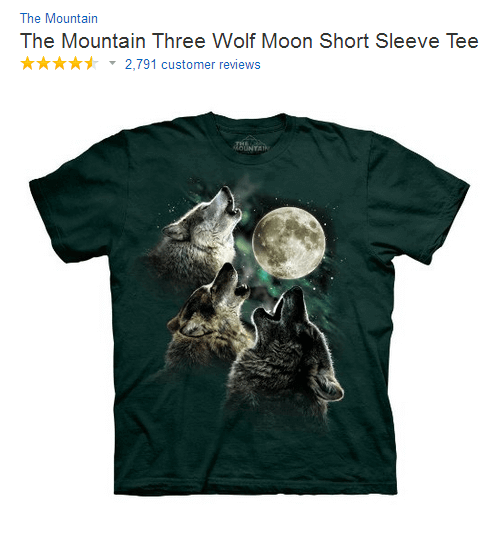

What’s funny about this is that the reviews catapulted the product into not only a meme, but also a high-demand product. It’s viral explosion increased the sales 2,300%!
Even though this example is funny, the underlying concept and numbers are real: people pay attention to reviews.
And that directly influences their purchase decision: product reviews can increase your conversion rates up to 76%.
Product reviews can increase your conversion rates up to 76% @allsop8184Reviews can be one of the most persuasive of all ecommerce conversion tactics. They are social proof of what your consumers truly think about your products, which builds a sense of trust for those who read them. Think of reviews as perpetually present word of mouth marketing for your business.
Do Reviews Actually Boost Rank?
Now that you’ve got the gist of how product reviews create a positive experience for your potential customers, let’s look at how they can help you in another major way: boosting search rank.
Check out the image below: Review signals are listed as the fifth most important factor in determining search engine rankings!
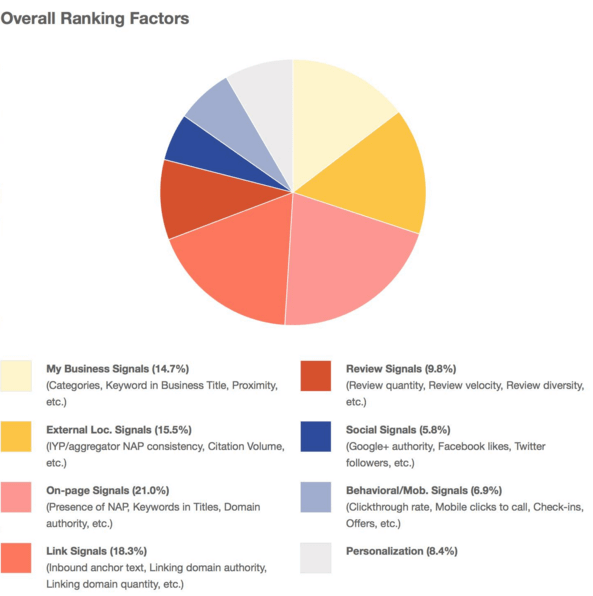
‘Review signals’ are the quantity, quality, diversity, and frequency of product reviews. These signals are sent to search engines, which are then used to rank your site. The better you score in these areas, the higher your search rank will be!
[content_upgrade]Like what your reading? Download these product review tactics as a condensed step-by-step PDF Guide for you and your team.
[/content_upgrade]
Check Your Ranking for Target Keywords
To check your search engine ranking for your target keywords in your reviews, use tools like SEMRush or Google Rank Checker. They’re a great way to see how review signals are impacting your rankings, and something you should definitely keep track of.
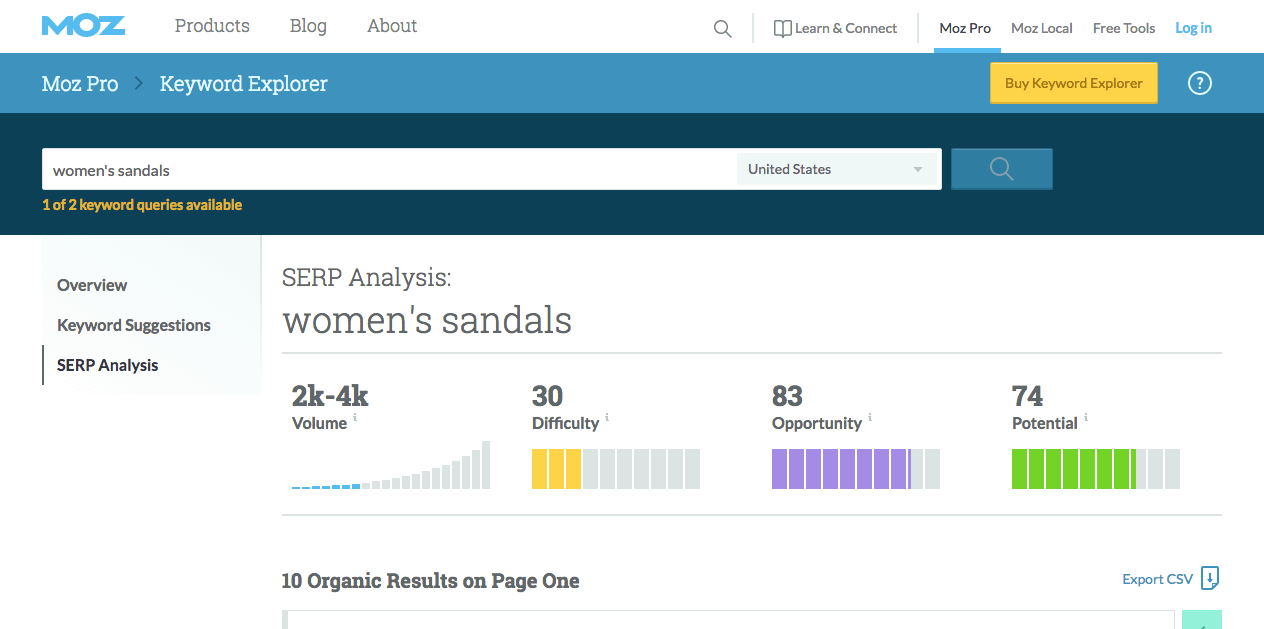
Additionally, you can use a tool like Moz’s new Keyword Explorer tool to get new target keyword ideas, research competition and search volume.
Integrate Reviews on Your Site to Boost Rank
1. Use Schema Markup To Present Reviews
Even if reviews of your product are out there, you still need to signal to Google what information you’d like it to index. By making it easy for your consumers to review your product and for Google to pick up on that information, you’re naturally going to boost your rank.
The idea behind schema markup is to display your site’s product page results in the form of “rich snippets” containing a rating of your product, the customer review, the date of the review and a brief description of the review in search engine results.
Here’s what it looks like:

And here’s what it looks like when you don’t have schema markup correctly implemented:

Presenting reviews with schema markup is a great way to enhance your click through rates. People are more likely to click on a result with reviews than one without reviews.
To display reviews in rich snippet format as highlighted above, you’ve got to embed the right HTML code on your website for each product review you receive.
This code can be either automatically produced and embedded in your website (once a customer leaves a review with an integrated third-party application), or needs to be manually produced for you to hard code into your site.
If you’re using WordPress, tools like Raven Schema automatically generate the HTML code. Or, you can use a review schema generator tool to produce it.
Here’s what actual schema markup looks like:

2. Use Third Party Apps
There are several third party apps that act as excellent review acquisition tools. Here are a few of our favorites:
Yotpo
Yotpo is a tool that sends customers a review request via email after they’ve made a purchase on your site. The simple review collection interface makes it a piece of cake for customers to leave reviews.

Using inline technology, Yotpo displays reviews as part of your site’s content depending on what customers are searching for. This opens up your site to a whole range of new keywords which are in your customer’s vocabulary. So, every time your product gets a new review search engines pick up on that and can display them in search engine result pages (SERPs).
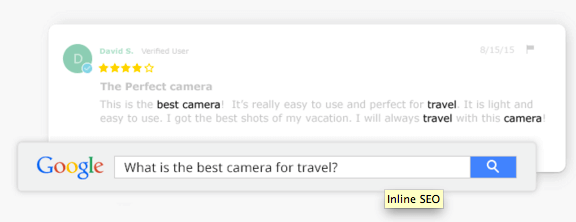
Judge.me
Judge.me is a Shopify app which also sends review request emails to customers. The biggest benefits this app offers are that it includes Google rich snippet reviews, review request emails on order fulfillment, and an all reviews page which aggregates all of your reviews on 1 page – all under their free plan.
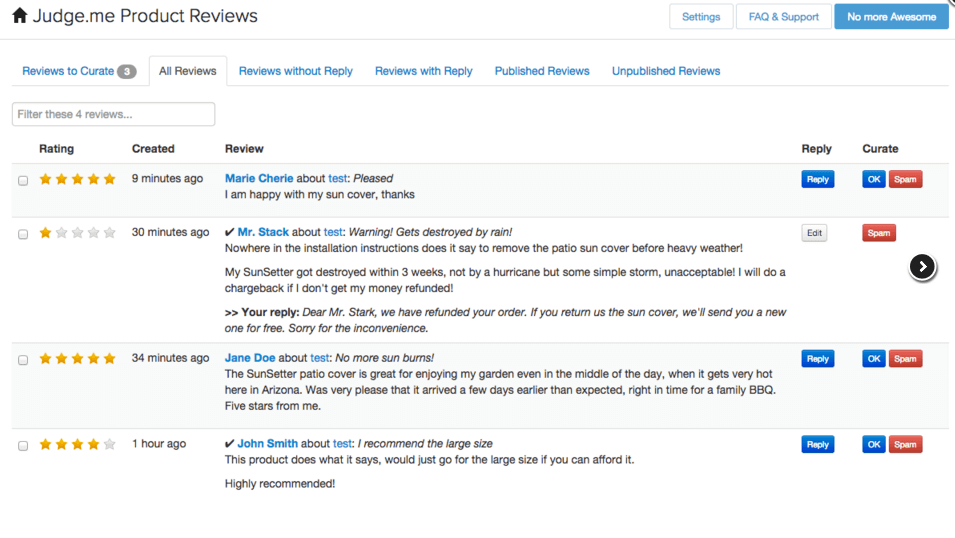
You can also curate reviews, reply to reviews, and review published and unpublished reviews all via the Judge.me admin panel.
WooCommerce Product Reviews Pro
WooCommerce Product Reviews Pro is an advanced reviews app that not only allows you to collect reviews and ratings, but also capture a photo or a video of the user in the review. This results in a far more engaging way to present reviews, and brings a personal element to the content.
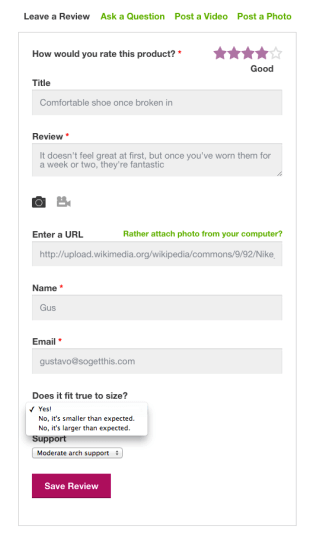
Using this app, you can also let customers ask you questions, express concerns, and contribute to product discussions. It’s almost like a little forum for your products, with the photos and video giving it real-world context.
Review Reminder
Review Reminder is a Magento app that allows you to schedule review reminders almost like an email drip campaign: Users receive emails at a frequency you set to ensure they complete a review. The best part is you can include coupons to incentivise users to complete reviews.
Each reminder can have it’s own configuration so it doesn’t become monotonous. You can also manually send review reminder emails to specific customer segments to ensure you’re targeting the right customers. Users can of course, unsubscribe from review reminder emails anytime.
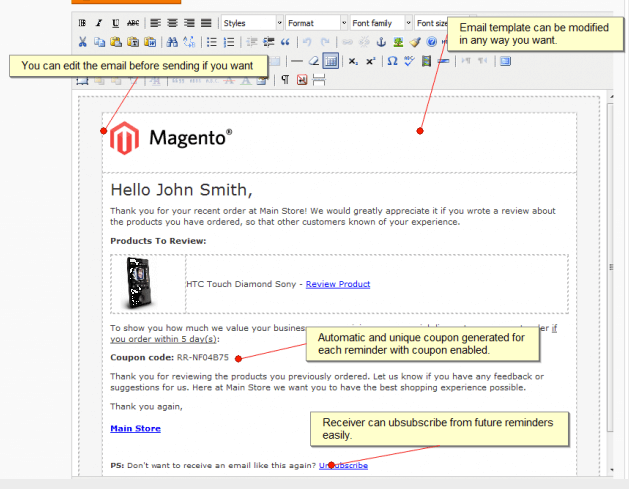
Ask Nicely
Ask Nicely is a tool combines reviews & ratings with net promoter scores (NPS) to test customer happiness after each purchase. By measuring the NPS on a daily basis, it empowers you to address customer pain points before they get blown out of proportion.
Constantly monitoring NPS in real-time is powerful, as it helps you not only understand how you can improve your service but also enhances the chances of making your product reviews more positive over time.
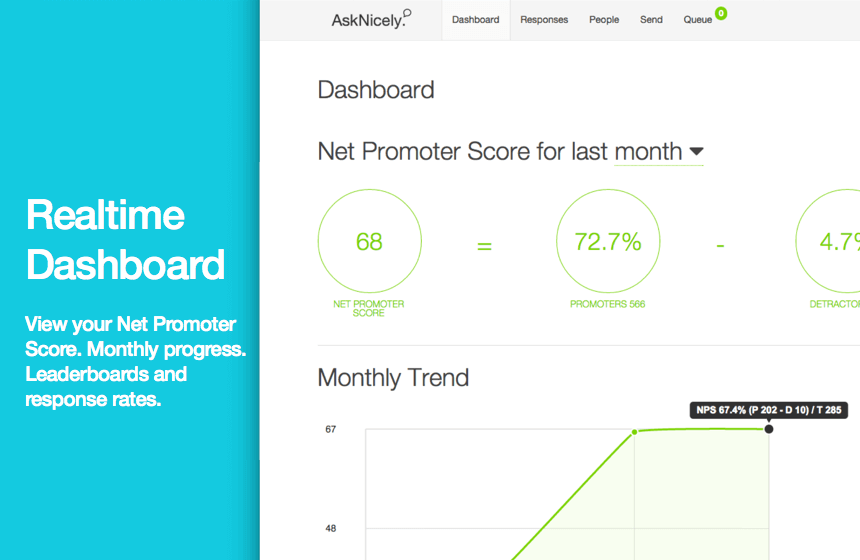
Here’s What Else You Should Know About Reviews
The list of tools you can use for collecting and enhancing search engine rank is literally endless. The important thing to note is that reviews really are user-generated content that give you deeper insight into the words your customers use to describe your products. Once you have that information, you can create even more content based on long-tail keywords you gather from reviews.
Reviews help keep your product pages ‘fresh’ as well: with the date of the review usually published, website visitors sense the relevance and activity on your product pages. This also helps establish you as a source that’s trustworthy and reliable.
So, get started incorporating reviews! Here’s what you need to do now:
- Spread awareness on review sites about your presence
- Add links to your emails and social media pages asking for reviews
- Incentivize customers to “share” their experience
If you have any questions about how reviews can integrate with your store, leave it in the comments section below.






